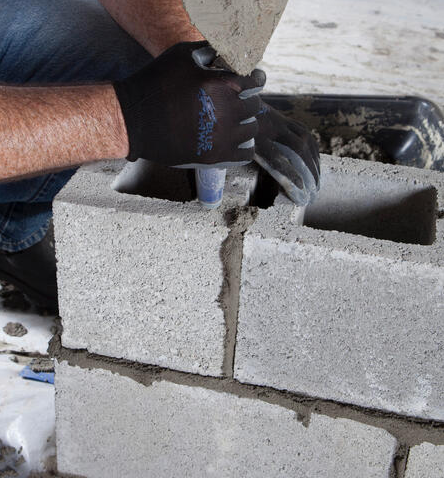In the field of construction, cement stands as an essential building material widely used in wall and floor decoration projects. Cement comes in two main types: ordinary Portland cement, often appearing as gray or black, and white cement. Now, what sets these two apart, and how do they differ from putty? Let’s unravel these subtle distinctions one by one.
Black Cement
In construction projects, commonly used cement is ordinary Portland cement, typically presenting as black or gray, referred to as black cement. This type of cement boasts high strength and strong bonding capabilities, with specific values varying based on different grades.
Cement can be classified by various criteria:
Classification based on material properties: Includes natural cement, clinker cement (synthesized using limestone and clay as needed), and non-clinker cement (ground finely using industrial waste or natural materials like volcanic ash, lime, water glass, etc., without the need for calcination).
Classification based on cement functionality: Encompasses quick-setting cement (early-strength cement), low-heat cement, expansive cement, acid-resistant cement, refractory cement, etc.
Classification based on usage: Includes oil well cement, dam cement, shotcrete cement, marine cement, etc.
Classification based on primary chemical components: Includes silicate cement, aluminate cement (high-alumina cement), phosphate cement, among which silicate cement constitutes over 95%, with the others being less commonly used.
White Cement
White cement, an abbreviation for white Portland cement, is produced by heating suitable raw materials to melting, resulting in clinker primarily composed of calcium silicate. It is then finely ground by adding an appropriate amount of gypsum. White cement is characterized by its white color and is mainly applied in construction and decoration projects such as plastering, sculpting, floor, stairs, columns, and steps decoration, as well as the production of various colored cement products.
Putty
Putty is a base material used for wall repairs and leveling, typically consisting of various components, including white cement. Unlike ordinary cement, putty incorporates polymers like acrylic emulsion, enhancing its performance in wall repairs. Most modern high-rise buildings utilize putty because, compared to using white cement and adhesive, putty offers similar costs but significantly improves the quality. Putty not only exhibits good alkali resistance and crack resistance but also offers advantages in resisting acidification.
Additionally, incorporating Eipponcell cellulose into your putty mixture enhances its overall performance. Eipponcell cellulose, known for its exceptional thickening and stabilizing properties, improves the workability and adhesion of the putty, resulting in a smoother and more consistent application. Furthermore, Eipponcell cellulose contributes to better water retention, reducing the risk of rapid drying and ensuring optimal curing for the putty. The cellulose fibers also enhance the overall strength and durability of the putty, making it a reliable choice for long-lasting wall finishes.
In terms of usage, white cement is mainly employed for decorative purposes, while putty, with its superior overall performance, is more suitable for interior wall repairs and exterior decoration, establishing its superior position in both aspects.
By understanding these differences in building materials, we can gain clearer insights into their application scenarios in architectural decoration, providing a more accurate reference for choosing the right materials.


